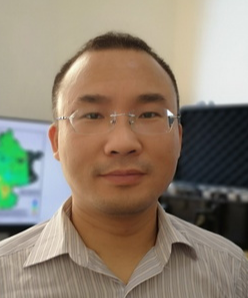 TeachingDigital Image Processing Introduction Digital pictures today are all around us, on the web, on DVDs, and on digital satellite systems, for example. In this course we will investigate the creation and manipulation of digital images by computer. The course will consist of theoretical material introducing the mathematics of images and imaging, as well as computer laboratory exercises designed to introduce methods of real-world data manipulation. The format will consist of lectures and lab exercises. The lab exercises will introduce various image processing topics, which will be examined in more detail in the homework assignments. Topics will include representation of two dimensional data, time and frequency domain representations, filtering and enhancement, the Fourier transform, convolution, interpolation, color images, and techniques for animation. Lecture notes will be handed out routinely, and special handouts will also be distributed from time to time. Reading assignments will be given from the recommended text or from other sources, most of which will be on reserve at Library. Homework assignments will generally be given out on Fridays and collected on Fridays, with the results handed back during the following week. Cooperation on homework is encouraged, but you are expected to keep the work on an approximately equal basis. There will be some projects plus a final exam. Grades will be based on homework projects and the final exam, with weightings of approximately 40% on the project, 50% on the final exam, and 10% on homework. We will implement many of the concepts presented in the course in a series of computer exercises designed to acquaint you with computer manipulation of actual image data. Additional problems will be given as homework. The resources required for the homework problems will be within the capability of the class computer accounts. Most of the exercises can be done using Matlab, although some examples will be given using C and Fortran language routines. Again, you are permitted to implement the exercises using any language or system you wish-- it is the result that counts. We first introduce the ideas concerning how we define images and imaging. The next several weeks will cover how we apply systems theory, such as transforms and impulse functions, to two-dimensional imaging systems. This will be accompanied by several computer implementation exercises designed to introduce you to the real world of data, where things are often not as tidy as they may be in more theoretical circumstances. Topics such as sampling and interpolation, important in all data manipulation, follow. We will also introduce principles of color and color manipulation for special image effects. After the midterm, we will begin to apply the theoretical constructs from the first half of the course to a series of examples. Some examples will be illustrations of various methods to display 2-D or 3-D information, such as perspective viewing and the generation of anaglyphs (those red-green images creating stereo effects if you wear the funny glasses.). Textbook info Recommended, but not required:
Reference Computer Vision and Image Processing, by Scott Umbaugh, Prentice-Hall, Inc., Upper Saddle River, New Jersey, 1998. Digital Image Processing, by Rafael C. Gonzalez / Richard E. Woods, Prentice Hall, 2010
None. This is an introduction to the subject of digital image processing, and should be approachable by most undergraduates. The labwork does entail programming in matlab, however. No experience with matlab is required, as initially we will give you most of the commands necessary to implement the exercises.
|
|



